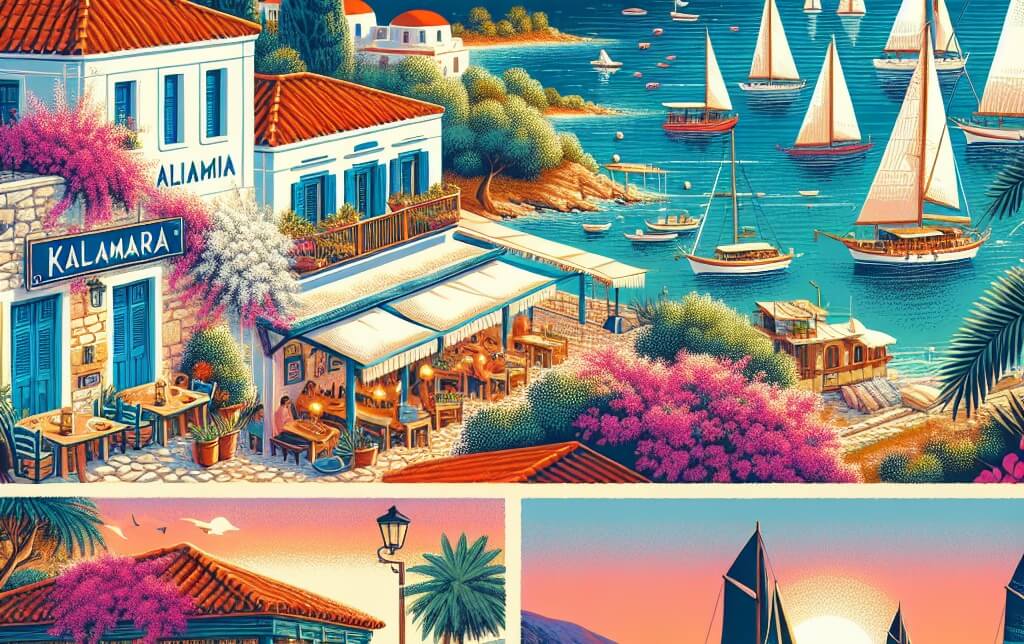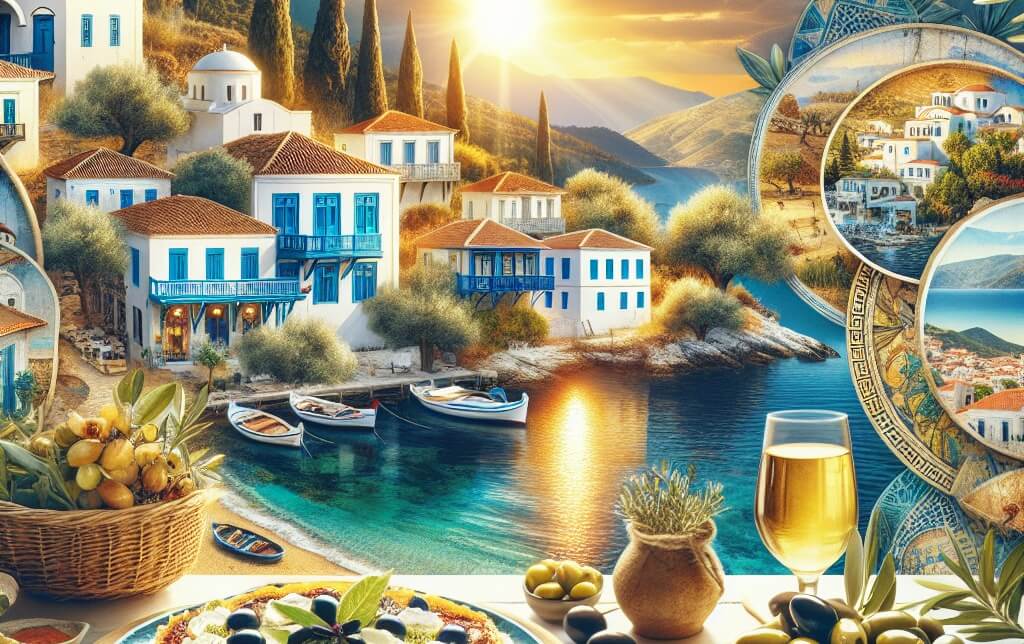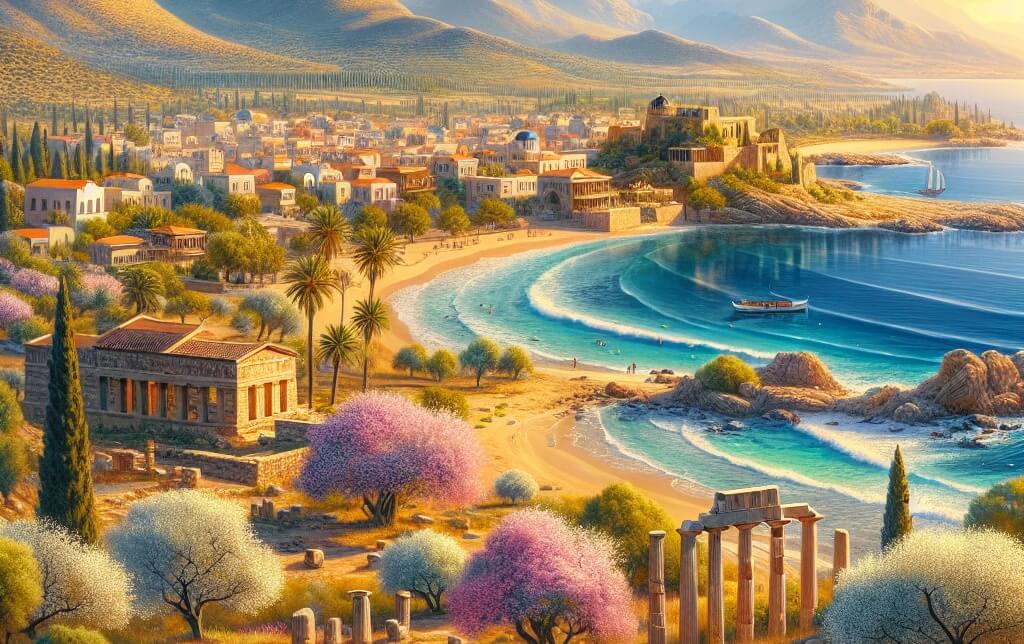
Explore Corfu, Greece: Interactive Map & Travel Guide
The interactive map and travel guide for Corfu, Greece provides a comprehensive resource for exploring this enchanting island in the Ionian Sea. Corfu, known for its stunning beaches, lush landscapes, and rich history, offers visitors a diverse range of experiences. The map allows travelers to navigate the island with ease, highlighting key attractions, accommodations, and dining options. Whether you seek to relax on the golden shores of Paleokastritsa, immerse yourself in the vibrant culture of Corfu Town, or hike through the rugged mountains of the interior, this guide serves as a valuable tool for planning your itinerary. With detailed information on transportation, activities, and local customs, the Corfu travel guide ensures a memorable and fulfilling visit to this captivating destination.
I. Introduction
In the context of exploring the Greek island of Corfu through a map, the introduction aims to provide a brief overview of the island's geographical features, historical significance, and cultural heritage. Corfu, located in the Ionian Sea off the northwest coast of mainland Greece, is known for its stunning beaches, lush green landscapes, and Venetian-influenced architecture. With a history dating back to ancient times, Corfu has been influenced by various civilizations, including the Greeks, Romans, Byzantines, Venetians, and British. This rich cultural tapestry is reflected in the island's diverse cuisine, traditions, and festivals. By examining a map of Corfu, one can gain a deeper understanding of its topography, landmarks, and points of interest, making it an invaluable tool for exploring and appreciating the island's beauty and history.
II. Historical Background
The historical background of Corfu, Greece is rich and diverse, shaping the island's identity and culture over the centuries. Corfu has been inhabited since ancient times, with evidence of settlements dating back to the Paleolithic era. The island has been ruled by various powers, including the Ancient Greeks, Romans, Byzantines, Venetians, and Ottomans. One of the most significant periods in Corfu's history was its time under Venetian rule, which lasted from the 14th to the 18th century. The Venetians left a lasting impact on the island's architecture, culture, and traditions. Corfu also played a strategic role in various conflicts and wars due to its strategic location in the Ionian Sea. Today, Corfu's historical background is evident in its well-preserved old town, ancient ruins, and diverse cultural heritage.
III. Geography and Location
The geography and location of Corfu, Greece play a crucial role in shaping the island's identity and character. Situated in the Ionian Sea, off the northwest coast of Greece, Corfu boasts a strategic position that has influenced its history and culture. The island's diverse landscape includes lush green hills, golden sandy beaches, and sparkling turquoise waters, making it a popular destination for tourists seeking natural beauty and relaxation. Additionally, Corfu's proximity to Italy and Albania has contributed to its unique blend of Greek, Venetian, and British influences, evident in its architecture, cuisine, and traditions. Overall, the geography and location of Corfu offer a rich tapestry of experiences for visitors to explore and appreciate.
IV. Corfu Town
Corfu Town, also known as Kerkyra, is the capital and largest town of the Greek island of Corfu. Situated on the eastern coast of the island, Corfu Town is a vibrant and historic city with a rich cultural heritage. The town is characterized by its Venetian, French, and British architectural influences, reflecting its long history of foreign rule. Visitors to Corfu Town can explore its picturesque Old Town, a UNESCO World Heritage Site, which is home to narrow cobbled streets, elegant mansions, and charming squares. Additionally, the town boasts a variety of museums, galleries, and historic sites, making it a must-visit destination for those seeking to immerse themselves in the history and culture of Corfu.
V. Natural Features
The natural features of Corfu, Greece, play a significant role in shaping the island's landscape and overall appeal. Located in the Ionian Sea, Corfu boasts stunning beaches with crystal-clear waters, rugged cliffs, and lush greenery. The diverse topography of the island includes rolling hills, fertile valleys, and towering mountains, such as Mount Pantokrator, which offers panoramic views of the surrounding area. Additionally, Corfu is known for its abundance of olive groves and cypress trees, adding to its picturesque scenery. The natural beauty of Corfu attracts visitors from around the world, seeking to explore its rich biodiversity and captivating landscapes.
VI. Cultural Significance
The cultural significance of Corfu, Greece, as depicted on a map, lies in its rich history and diverse heritage. Corfu, known for its Venetian, French, British, and Greek influences, showcases a unique blend of architectural styles, culinary traditions, and artistic expressions. The island's strategic location in the Ionian Sea has made it a crossroads of civilizations, resulting in a vibrant cultural tapestry that continues to attract visitors from around the world. The map of Corfu serves as a visual representation of this cultural amalgamation, highlighting key landmarks, historical sites, and natural wonders that contribute to the island's allure and historical importance.
VII. Tourism and Popular Destinations
VII. Tourism and Popular Destinations in Corfu, Greece, play a significant role in the region's economy and cultural heritage. Corfu, known for its stunning beaches, historical sites, and vibrant nightlife, attracts a diverse range of tourists from around the world. The island's rich history, including influences from ancient Greece, the Byzantine Empire, and the Venetian Republic, can be explored through its numerous archaeological sites and museums. Additionally, Corfu's picturesque villages, such as Paleokastritsa and Pelekas, offer visitors a glimpse into traditional Greek life and hospitality. Overall, the tourism sector in Corfu continues to thrive, offering visitors a blend of relaxation, adventure, and cultural immersion.
VIII. World Heritage Status
Corfu, an island located in Greece, holds a significant historical and cultural value that has garnered attention for potential World Heritage status. The island's rich history, from ancient Greek civilization to Venetian and British influences, contributes to its unique cultural heritage. Furthermore, Corfu's stunning natural landscapes, including its lush vegetation and crystal-clear waters, add to its appeal as a potential World Heritage site. The recognition of Corfu's exceptional universal value through World Heritage status would not only preserve its cultural and natural treasures but also promote sustainable tourism and conservation efforts on the island.
IX. Corfu Road Map
The Corfu Road Map, designated as IX on the Greece Corfu Map, is a crucial navigational tool for travelers exploring the island of Corfu. This detailed map provides essential information on the road network, including major highways, smaller roads, and key landmarks. By referencing the Corfu Road Map, visitors can efficiently plan their routes, locate points of interest, and ensure a smooth travel experience on the island. Whether driving to popular attractions, accessing remote villages, or simply enjoying the scenic drives, the Corfu Road Map serves as a reliable guide for both tourists and locals alike.
X. Conclusion
In conclusion, the map of Corfu, Greece provides a comprehensive overview of the island's geographical features, including its coastline, major cities, and topographical details. By studying this map, one can gain a better understanding of Corfu's layout and the distribution of its natural resources. Additionally, the map serves as a valuable tool for tourists and researchers alike, offering insights into the island's historical sites, cultural landmarks, and recreational opportunities. Overall, the Corfu map is an essential resource for anyone seeking to explore and learn more about this beautiful Greek island in the Ionian Sea.









